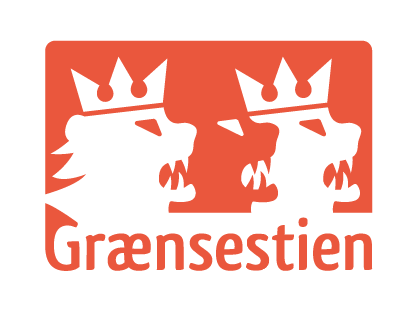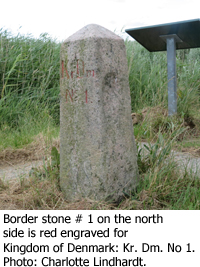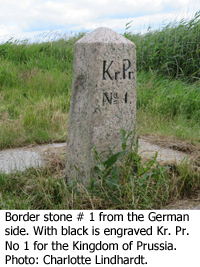Border Poles and Border Stones
During the winter of 1864-1865, 128 border poles were placed along the new Kongeå River Border. The poles were made of wood and painted white by Danish carpenters. While no. 1 was placed next to Sprækbro, Hejlsminde was given no. 128. The distance between the poles varied from 100 to 1500 m, depending on the terrain.


